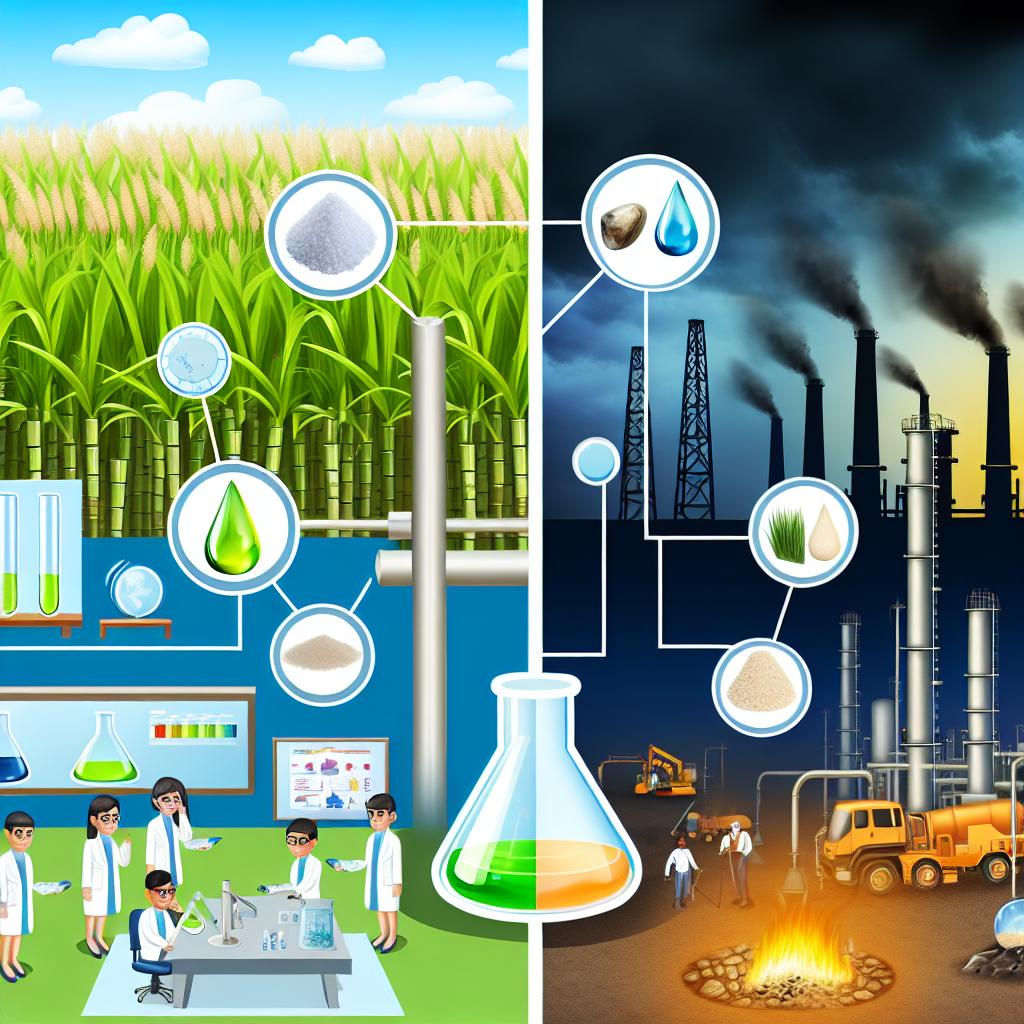Introduction to Biofuels and Fossil Fuels
The global reliance on fossil fuels throughout history is undeniable. These sources, including coal, oil, and natural gas, have powered industries and homes for centuries. However, as concerns about environmental sustainability and climate change intensify, there is an evolving shift towards alternative energy solutions such as biofuels. To engage with this transition effectively, it is critical to understand the distinct characteristics and intersections between fossil fuels and biofuels. This understanding lays the foundation for informed decisions regarding energy usage and future energy strategies.
What Are Biofuels?
Biofuels represent a category of energy sources derived from organic materials or biomass. This biomass encompasses a range of plant materials and animal matter. Among the various types of biofuels, ethanol, biodiesel, and biogas are the most recognized. Ethanol, commonly produced from crops like corn and sugarcane, is an alcohol that serves as an additive or alternative to traditional gasoline. Biodiesel is produced from vegetable oils or animal fats and can be used in diesel engines with little to no modification. Meanwhile, biogas is created through the breakdown of organic waste materials under anaerobic conditions, providing a gaseous fuel source that can be used for heating or electricity generation.
Biofuel Production
The production processes for biofuels differ depending on the type but often involve biological or chemical transformation. For ethanol, the primary process is fermentation. During fermentation, sugars present in plants are converted into alcohol by microorganisms such as yeast. Conversely, biodiesel production involves a chemical reaction known as transesterification. In this process, oils or fats are reacted with an alcohol, such as methanol, in the presence of a catalyst. This reaction yields esters (biodiesel) and glycerol as byproducts. Understanding these production methodologies is vital for assessing the efficiencies and environmental implications of biofuel use.
Fossil Fuels: An Overview
Fossil fuels are formed from the anaerobic decomposition of ancient organic material over millions of years. They are considered non-renewable because their regeneration rate is exceedingly slow compared to the rate of extraction and consumption. These fuels are extracted through mining or drilling processes and then refined into usable energy products such as gasoline, diesel, and natural gas. Despite environmental concerns, fossil fuels remain integral to the global energy matrix due to their high energy density and established infrastructure for distribution and use.
Advantages of Fossil Fuels
The continuity of fossil fuel use is attributed mainly to their advantages in energy density and supply chain establishment. High energy density means that fossil fuels can store large amounts of energy in relatively small quantities, making them exceptionally efficient for transportation and electricity generation. Additionally, the current infrastructure—ranging from extraction and refining to transportation networks—is deeply rooted and operational on a global scale. This existing infrastructure supports a continuous and reliable supply of energy, underpinning industrial growth and economic stability in numerous regions worldwide.
Comparative Environmental Impact
The environmental impacts of biofuels and fossil fuels differ notably. One of the most significant benefits of biofuels is their potential to create a neutral or reduced carbon footprint. When biofuels are combusted, they release carbon dioxide, similar to fossil fuels; however, the growth of the biomass source has already absorbed an equivalent amount of CO2 from the atmosphere, potentially resulting in a balanced carbon cycle. This process is in stark contrast to fossil fuels, which release carbon that has been sequestered underground for millions of years, thereby increasing atmospheric carbon levels and contributing to climate change.
Resource Availability and Renewability
The renewability of biofuels is a compelling factor driving their adoption. Since they are derived from crops and organic waste, biofuels present a sustainable supply option that can be cultivated and replenished. This contrasts sharply with fossil fuels, which are finite and diminishing, posing a risk to long-term energy security. By turning to biofuels, countries can enhance their energy autonomy and minimize dependency on imported fossil fuels. The cyclical nature of biomass cultivation supports a continuous and renewable energy resource, promising a path toward sustainable energy practices.
Economic Considerations
The economic dynamics of biofuels and fossil fuels involve considerations of production costs, market influences, and governmental policies. Biofuels generally present higher initial production costs, attributed to factors such as agricultural input requirements and the sophistication of processing technology. Despite these challenges, incentives in the form of subsidies, tax benefits, and mandates are being enacted to spur biofuel adoption and innovation. Over time, these measures—coupled with advances in technology and economies of scale—are likely to narrow the cost gap between biofuels and fossil fuels.
Market Influence and Policy
Governmental policies play a pivotal role in shaping the development and adoption of biofuels. Through various policy instruments such as subsidies, grants, and tax incentives, governments can promote biofuel technology and infrastructure. In some regions, mandates stipulate a minimum percentage of biofuel content in fuels. Although fossil fuels have a longer history of usage and a largely self-sustaining market, they are increasingly subjected to regulatory efforts aimed at mitigating their environmental impact. Balancing these regulatory frameworks is essential to transitioning toward a low-carbon energy future.
Conclusion
The examination of biofuels in comparison to fossil fuels reveals intricate dynamics encompassing environmental impacts, resource renewability, and economic factors. While biofuels offer a pathway toward reduced emissions and sustainable energy cycles, hurdles like higher production costs and technological barriers must be addressed. Nevertheless, as technological advances continue and policy environments evolve, biofuels have the potential to form a larger part of the global energy landscape. Meanwhile, fossil fuels remain a cornerstone of energy supply, thanks to their entrenched infrastructure and high energy yield. The informed understanding of these differences is crucial for developing energy strategies aimed at securing an eco-friendly and reliable energy future.
For additional exploration of this subject matter, consulting industry reports and materials from reputable energy research organizations can provide deeper insights into current trends and future projections in the energy sector.


